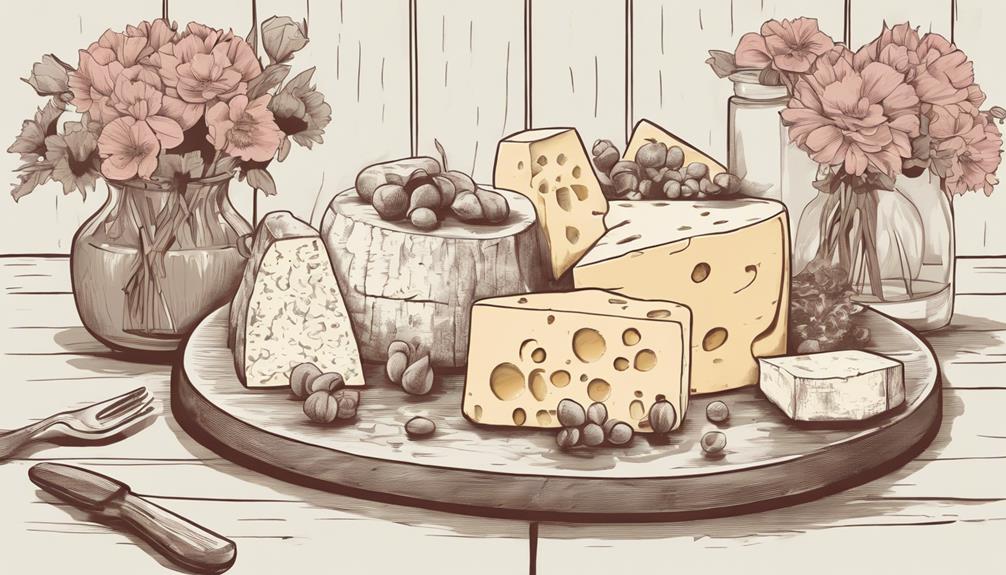How To Become More Self-Sufficient Without Starting a Full-Blown Farm…
Want to start preserving your harvest, making your own soap, or building a backyard root cellar — but not sure where to begin? “Homesteading Advice” gives you instant lifetime access to 35+ practical homesteading books on food preservation, veggie gardening, DIY natural cleaning products (save over $250 per year with this skill alone), brewing, off-grid energy, and a whole lot more…
Click Here To Check It Out Now!
“I’m planning to host a cheese-tasting event at my home in Sydney, and I want it to be both fun and educational for my guests. There will be a mixture of cheese enthusiasts and those who are completely new to the world of cheese. How can I ensure that everyone has an engaging and informative experience?” thanks, Patrick, Sydney, Australia.
How Do You Create An Educational Cheese Tasting Experience?
Hey Patrick! Hosting a cheese-tasting event sounds like a fantastic idea and can be incredibly enjoyable for both cheese connoisseurs and newbies alike. Let’s break it down together to ensure it’s an unforgettable experience for your guests.
Setting the Scene
The ambiance is key to creating the right mood for your event. Here are a few elements to consider:
- Location: Set up a dedicated space, free from distractions, where everyone can gather comfortably.
- Decor: Think rustic charm—wooden boards, candles, and maybe some fresh flowers to set a relaxed and cozy atmosphere.
- Seating: Arrange the seating so everyone can see and interact with the cheese, and each other, easily.
- Music: Create a soft background playlist to keep the atmosphere lively yet intimate. Classical or jazz often work well.
Selecting the Cheeses
When it comes to choosing cheeses, variety is key. Aim to include different types to cater to all tastes and to educate guests about different cheese families:
- Soft Cheeses: Options like Brie or Camembert, which are creamy and approachable.
- Semi-Hard Cheeses: Gouda or Havarti provide a mild but distinct taste.
- Hard Cheeses: Aged Cheddar or Parmesan for their rich, concentrated flavors.
- Blue Cheeses: Roquefort or Gorgonzola to introduce stronger, more complex flavors.
- Fresh Cheeses: Include cheeses like Mozzarella or Feta, which are light and mildly tangy.
Organizing the Tasting Order
The order in which you present the cheeses can impact the tasting experience significantly:
- Start with Mild: Begin with the lightest and least intense flavors, such as fresh cheeses.
- Gradually Build Intensity: Move on to semi-hard and hard cheeses, finishing with strong and pungent varieties like blue cheese.
Providing Educational Content
To make the event educational, prepare to share some fascinating details about each cheese:
- Origins: Discuss where each cheese comes from and any history behind it. For example, Brie is often referred to as the “Queen of Cheeses” and has origins in the Brie region of France.
- Production Method: Explain how each cheese is made, including the type of milk used (cow, goat, or sheep), aging process, and any unique techniques.
- Flavor Profiles: Describe the taste, texture, and aroma characteristics. Use vivid and relatable descriptors. Instead of just saying “nutty,” you might say, “This Manchego has a nutty flavor reminiscent of toasted almonds.”
Enhancing the Experience with Pairings
Pairing cheeses with the right accompaniments can elevate the tasting experience:
- Wine: Consider offering both red and white wine options. For instance, a soft cheese like Brie pairs well with fruity white wines like Sauvignon Blanc, whereas an aged Gouda goes splendidly with a robust red like Cabernet Sauvignon.
- Beer: Offer some craft beers as well; they can complement the flavors wonderfully. Think an IPA to go with a sharp cheddar or a stout to accompany a blue cheese.
- Breads and Crackers: Provide a variety of options, from plain water crackers to sourdough bread, allowing guests to cleanse their palate between tastings.
- Fruits and Nuts: Fresh fruits like grapes or apples and nuts like walnuts or almonds offer a contrasting sweetness and crunch.
- Condiments, Honey, and Jams: Sweet accompaniments like fruit preserves and honey can balance the saltiness and richness of the cheeses.
Interactive Elements
Incorporate some interactive components to make it more engaging:
- Cheese Quiz: Create a fun quiz or trivia game about cheese and its history. It can be a great icebreaker.
- Tasting Notes: Provide notebooks or printed sheets where guests can jot down their thoughts and preferences about each cheese.
- Blind Tasting: Add an element of surprise by having a segment where guests taste cheeses blindfolded and guess what they are.
Guided Tastings
A guided approach can add a lot of value, especially for those new to cheese tasting:
- Cheese Expert: Consider having a local cheesemonger or cheese expert to lead the tasting and share their knowledge.
- Step-by-Step Instructions: Walk your guests through how to properly taste cheese—observe, smell, taste, and savor. Explain the importance of each step to appreciate the cheese fully.
Follow-Up and Additional Resources
Following the event, consider offering resources or follow-up activities to continue the cheese journey:
- Cheese List: Share a list of the cheeses sampled along with where they can be purchased.
- Further Reading: Provide books, websites, or documentaries for those interested in learning more about cheese-making and tasting.
- Future Events: Encourage guests to participate in future tastings or workshops. You can discuss holding themed cheese nights, such as focusing only on French cheeses or artisanal cheeses from local producers.
- Recipes: Share recipes that incorporate the cheeses tasted, allowing guests to experiment at home.
Final Thoughts…
Patrick, thanks so much for reaching out with this excellent question! Creating an educational cheese tasting experience is a lovely way to bring people together and explore the rich world of cheese. Just remember to keep the atmosphere relaxed and fun. Focus on variety, informative content, and engaging activities, and you’ll be sure to impress your guests. Enjoy your cheese-tasting adventure!

